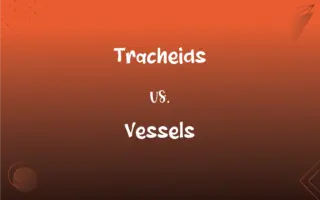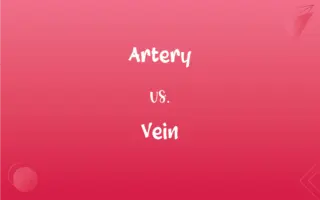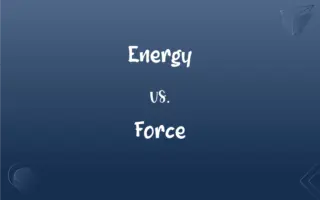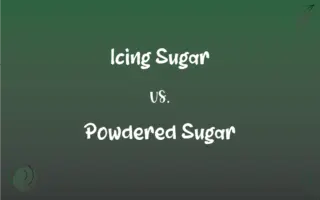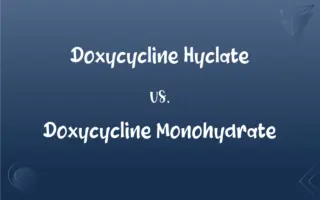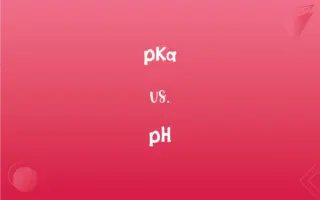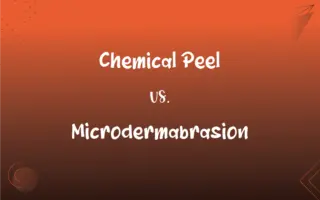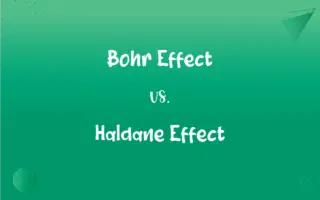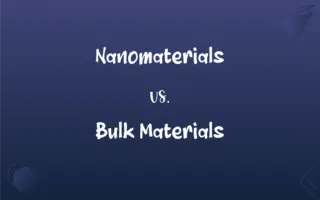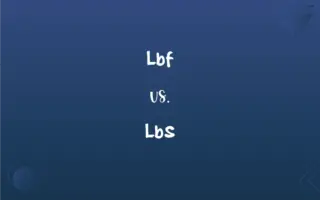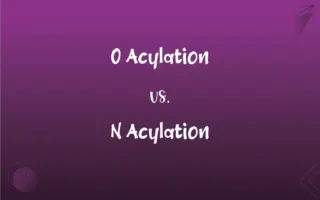Physical Change vs. Chemical Change: What's the Difference?
Edited by Janet White || By Harlon Moss || Updated on October 10, 2023
Physical change alters form without changing composition; chemical change alters the substance's composition, forming new substances.
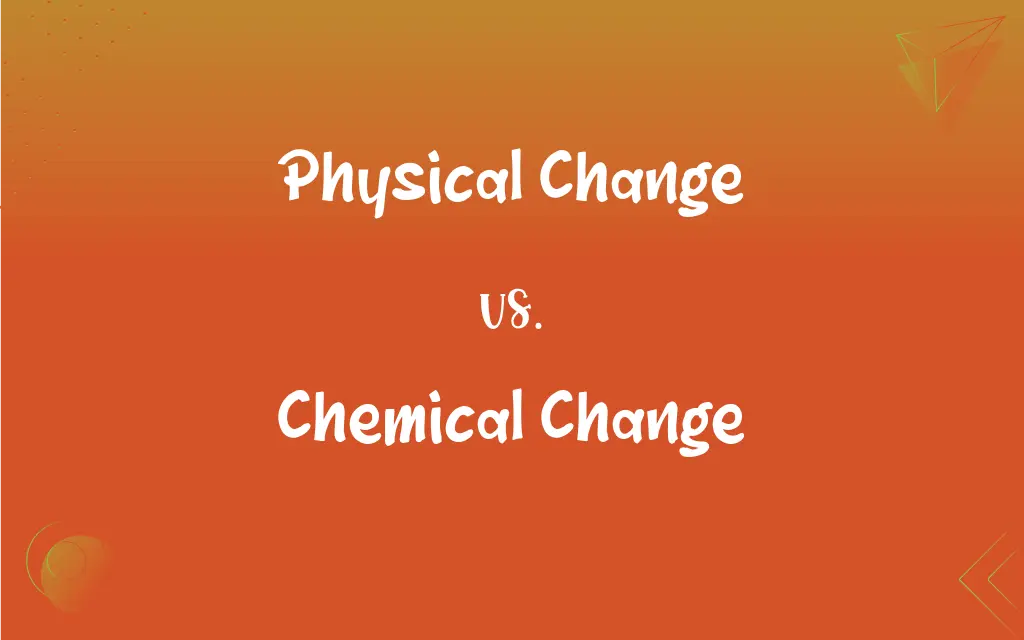
Key Differences
A physical change represents a modification in a substance's appearance without adjusting its fundamental identity or composition. On the opposite end, a chemical change is a transformation that causes a substance to change its basic constitution, generating new substances in the process. The outcome of a physical change can often be reversed, signifying a transient adjustment, while chemical changes typically usher in an irreversible shift, presenting permanent alterations.
The dynamics of physical change revolve around adjusting a substance’s form, state, or appearance without initiating a change in its molecular identity. In contrast, chemical changes enforce a reorganization at a molecular or ionic level, birthing different substances with distinct properties. Physical changes, such as melting, do not produce new substances, while chemical changes, such as burning, create fundamentally different products.
Evidently, physical changes retain the substance’s intrinsic characteristics, merely transforming its physical attributes like shape or phase. Conversely, chemical changes recreate a substance’s internal structure, thereby manufacturing new entities with novel properties. Physical changes might involve changes in physical properties such as shape or phase, while chemical changes produce new substances.
Interestingly, physical changes can be generally classified as reversible because the initial substance can often be recovered. However, chemical changes traditionally mark a point of no return, as the original substance cannot be regained through simple means. Physical changes, like dissolving sugar in water, can often be reversed, while chemical changes, such as baking a cake, cannot.
In various scenarios, a physical change might be mistaken for a chemical change due to a dramatic alteration in appearance. However, a steadfast rule remains that if the substance’s fundamental composition remains unaltered, it is a physical change. In contrast, if new substances emerge, it is definitively a chemical change. For instance, breaking a glass is a physical change, whereas rusting iron is a chemical change.
ADVERTISEMENT
Comparison Chart
Definition
A change affecting the form of a chemical substance.
A change that results in the formation of new chemical substances.
Word Class
Noun Phrase
Noun Phrase
Plural Form
Physical Changes
Chemical Changes
Example Sentence
Melting ice is a physical change.
Rusting iron represents a chemical change.
Associated Adjective
Physical
Chemical
ADVERTISEMENT
Physical Change and Chemical Change Definitions
Chemical Change
A change resulting in the formation of a new substance.
Cooking an egg causes a chemical change.
Chemical Change
A change that modifies the intrinsic properties of a substance.
Spoiling milk undergoes a chemical change.
Chemical Change
An irreversible modification forming new chemical entities.
Rust forming on iron is a chemical change.
Chemical Change
A process involving rearrangement of atoms or molecules.
Digesting food entails a chemical change.
Chemical Change
A process that alters the chemical composition of a substance.
Burning wood induces a chemical change.
FAQs
How can you identify a chemical change?
A chemical change can typically be identified by the formation of new substances, often involving a color change, gas production, or change in energy.
Are chemical changes typically reversible?
Chemical changes are usually not reversible through simple physical means since new substances are formed.
What is a simple way to understand a physical change?
A physical change alters a substance's appearance without changing its basic composition, like melting ice.
Is dissolving salt in water a physical change?
Yes, as the salt and water retain their chemical properties and can be separated back.
What is an example where both physical and chemical changes occur?
Frying an egg involves both physical (whites becoming solid) and chemical (proteins denaturing) changes.
Is rust forming on iron a physical or chemical change?
Rust forming on iron is a chemical change because new substances (rust) are formed.
Can temperature changes indicate a physical change?
Temperature changes can occur in both physical and chemical changes, like melting ice or burning wood.
Are color changes always indicative of chemical changes?
While color changes often indicate chemical changes, some physical processes like diffraction can also alter perceived colors.
Can a physical change affect the state of matter of a substance?
Yes, a physical change can involve a change of state, such as water boiling into steam.
Are energy changes always indicative of chemical changes?
Not always, but energy changes, like heat production or absorption, often accompany chemical changes.
Is breaking glass a physical change?
Yes, breaking glass is a physical change as it alters shape but not chemical composition.
Is cooking food considered a chemical change?
Yes, cooking food changes its chemical makeup, creating new substances.
Is fermenting a physical or chemical change?
Fermenting is a chemical change as it transforms sugar into alcohol and carbon dioxide.
Does a chemical change imply a change in physical properties too?
Yes, chemical changes often alter physical properties like color, shape, and texture as new substances are formed.
Can physical changes be easily reversed?
Often, physical changes can be reversed more easily than chemical changes, like freezing and melting water.
Is tearing paper a physical or chemical change?
Tearing paper is a physical change because the paper's chemical composition remains the same.
Does a chemical change always result in visually observable changes?
No, while many chemical changes are visible (like color changes), some are not immediately observable.
Can physical and chemical changes occur simultaneously?
Yes, in some processes like burning candles, both physical (melting wax) and chemical (burning wick) changes occur.
Can changing the state of matter involve chemical changes?
Typically, changing the state of matter (e.g., solid to liquid) is a physical change unless chemical bonds are altered.
Can changes in energy also accompany physical changes?
Yes, physical changes like boiling or melting require energy changes in the form of heat absorption or release.
About Author
Written by
Harlon MossHarlon is a seasoned quality moderator and accomplished content writer for Difference Wiki. An alumnus of the prestigious University of California, he earned his degree in Computer Science. Leveraging his academic background, Harlon brings a meticulous and informed perspective to his work, ensuring content accuracy and excellence.
Edited by
Janet WhiteJanet White has been an esteemed writer and blogger for Difference Wiki. Holding a Master's degree in Science and Medical Journalism from the prestigious Boston University, she has consistently demonstrated her expertise and passion for her field. When she's not immersed in her work, Janet relishes her time exercising, delving into a good book, and cherishing moments with friends and family.
